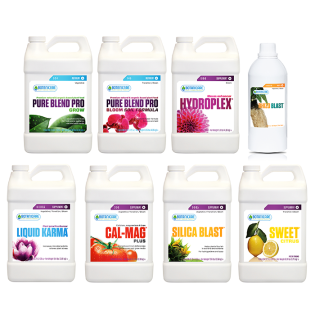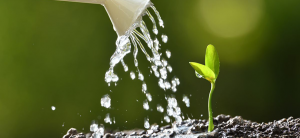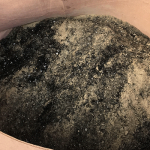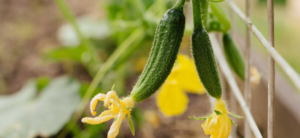
One of the most common questions new growers ask is “how often should I give my plants nutrients?”.
The answer varies based on a few factors, including your grow method, the nutrients you’re feeding, and what stage of growth your plants are in.
Reading a feeding chart or feeding schedule will help you determine how often you need to give your plants nutrients. But, they don’t tell the whole story.
So, before we can teach you how to use a feeding schedule, we need to explain how to tell if you are underfeeding or overfeeding your plants.
What happens when you overfeed and underfeed your plants
Whether you underfeed or overfeed your plants, you'll experience issues. Nutrient deficiency and toxicity each bring their own problems, so let's go over both of them before we move onto feeding recommendations.
Nutrient toxicity
When you overfeed your plants, they may experience nutrient toxicity. Too much of any of the macro, micro, or secondary nutrients can lead to real problems.
Different nutrients cause different issues, though. This makes it tough to determine which nutrient you are feeding your plants too much of.
For example, excess nitrogen leads to darker, softer foliage along with slow root growth, browning of leaves, and deformities in your flower.
Compare that to Phosphorous, which when in excess, can cause lockout of calcium, iron, magnesium, and zinc. Lockout of each of these nutrients can cause their own issues respectively.
There are tons of other secondary and micronutrients that your plant can be overfed, too. These can lead to even more harmful issues.
More often than not, issues with feeding come from overfeeding. Many new growers make the mistake of thinking more is better when it comes to growing, both in terms of nutrients and lighting. But, this is not true.
This isn't to say that overfeeding is necessarily worse than underfeeding, though. Underfeeding has its own issues too, which we'll cover now.
Nutrient deficiency
When you underfeed your plants, they can develop a nutrient deficiency. When this happens, you can expect slow, sickly growth. Like with toxicity, your plant can become deficient in just about any nutrient.
What makes nutrient deficiencies even more frustrating to deal with is that nutrients can affect the availability of one another.
So, if your plant is deficient in one nutrient, it may become deficient in other areas more easily, and it becomes tough to identify the root cause.
We have an entire guide on diagnosing nutrient deficiencies. But, if you suspect you may be dealing with one, check your pH first.
Often times, a nutrient deficiency is caused by out of whack pH, which affects the uptake of certain nutrients. You can learn more about the relationship between nutrients and pH in our blog.
What factors affect how often should you feed your plants nutrients?
We are going to take a look at all the factors that play into determining how often you need to give your plants nutrients.
Then, we’ll explain how to use your feeding schedule that came with your plant nutrients.
Phase of growth
One of the biggest determinants in how often you need to give your plants nutrients is the stage of growth they are in.
As you can probably guess, fresh seedlings or clones do not need to be given nutrients as often as a fully grown, flowering plant.
In fact, if you feed to often when your plants are young, you can burn them, or even kill them. As such, it’s usually encouraged to just feed plain water for a while when first starting seeds, until a few weeks into their life.
What type of grow media are you using?
Certain types of grow media will require different feeding schedules. For example, coco is inert, and provides no nutritional value to your plants. Because of this, you need to feed more aggressively and more often in it.
On the other hand, a soil like Ocean Forest, or super soil you made yourself, will have lower feeding requirements.
This is because these soils are packed full of beneficial microbes and other nutrients that feed your plants on their own, for at least a few weeks of growth.
Then, you have hydroponics. It’s important that you carefully test your ppm in your hydroponic system, and keep your nutrient reservoir topped off.
What type of nutrients are you using?
Perhaps the biggest determinant in how often you need to feed your plants nutrients will be the nutrient line itself!
Some nutrients are more concentrated than others, and so you won't need to feed as often. This is the case with organic amendments, which get mixed into your soil.
The easiest way to make sure you don't over or underfeed your plants is to simply follow your nutrient feeding schedule.
If you don't already have a nutrient package, check out our article on the best plant nutrients of the year.
What is a feeding schedule, and how do you use it?
Using a feeding schedule is the easiest way to ensure you feed your plants what they need, when they need it.
A feeding schedule is just a chart that comes with your nutrients. It details which components of the nutrient line you need to feed during each stage of growth. It also tells you how much to feed.
Often times, your feeding schedule will tell you how often you should give your plants nutrients based on what type of media or hydroponic system you are using.
For example, the Cultured Solutions feeding schedule below has different feeding requirements for a drain to waste system than a recirculating hydro system.

How to read a feeding schedule
Most feeding charts are super simple to follow. All you need to do is follow the requirements week by week.
Many feeding charts will have important information above or below the actual schedule. This includes when you should be flushing if you need to check pH every time you feed, and more.
Here are a few examples of feeding schedules from various nutrient lines.


Some feeding schedules have a lot more information than others. As you can see, this Fox Farm feeding schedule is super simple and easy to follow.
On the other hand, some have a ton of information, such as the Emerald Harvest 3 Part feeding schedule. Because this nutrient line has more parts to it, it makes sense that the chart will be more involved.

Final thoughts on feeding your plants
So, the answer to "how often should I give my plants nutrients?" is - it depends. Your specific grow will have its own requirements, and your feeding chart should take any of the guesswork out of it.
But, just because you are following a feeding schedule doesn't mean you won't overfeed or underfeed your plants. You still need to closely monitor for deficiency or toxicity.
And regardless of what your feeding schedule says, you should always pH your nutrient solution.
If you have any questions about feeding your plants, or want to see the best plant nutrients on the market, check out our blog!







































